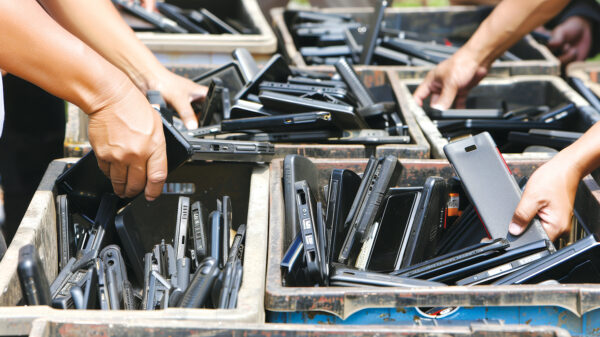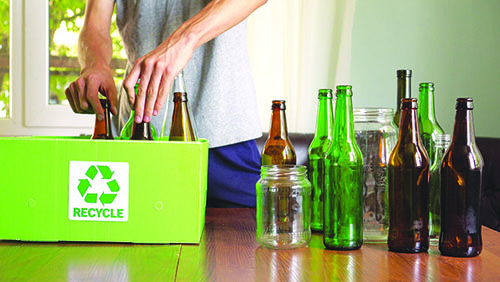by MAURA KELLER
The year 2020 was a tumultuous one for many industries. However, at the end of 2020, Argus Media, a company which produces price assessments and analysis of international energy and other commodity markets, released results of a survey they conducted with scrap metal industry players.

This survey indicated that the U.S. domestic ferrous scrap market will experience a surge in global ferrous scrap demand – during the first quarter of 2021 and beyond.
The Argus report indicated that gradual increases in manufacturing, plus a scarcity of finished steel, has resulted in the U.S. and global steel prices soaring in fourth quarter 2020. The report further indicated that “the trend of finished steel demand outpacing supply has been mirrored in other major steel producing economies throughout Latin America, Europe, Asia and the Middle East and North Africa, simultaneously returning to the seaborne market for containerized and deep-sea bulk scrap.”
The Institute of Scrap Recycling Industries’ (ISRI) chief economist and director of commodities, Joe Pickard said the economy continues to have a tremendous impact on ferrous metal recycling, including scrap generated from construction and demolition.
“The COVID-induced sharp contraction in economic output, manufacturing and construction in the second quarter of 2020 created supply chain disruptions that are still being worked out today,” Pickard said. As demand from the manufacturing and construction industries has subsequently ramped back up, prices for raw material inputs including steel and ferrous scrap have been rising sharply.
“Currently, scrap yards are reporting some of the best processing volumes and commodity values in years as the economy continues to recover,” Pickard said.
William Turley, executive director of the Construction & Demolition Recycling Association, said that when the pandemic first started in 2020, the construction and demolition recycling industry was enjoying a continuing tide of prosperity because of all the construction and demolition taking place, and the construction market was booming.
“But then when state and local governments began shutting down construction projects early in the crisis, obviously that affected incoming volumes of material to be recycled,” Turley said. “That includes metals, which are almost always the first thing a construction and demolition recycler strives to remove from the debris stream. Though many times, the on-site contractors also set aside this more valuable waste.”
While construction activity has since rebounded, uncertainty about the future economy has made questionable many planned and upcoming development projects. All this affects how much metal construction and demolition recyclers receive, and overall Turley would say that the industry was down about 20 percent in all incoming material in 2020, including metals.
“Low prices have affected how eager some recyclers are to recover any metals, though prices have rebounded recently,” Turley said.
Chris Batterson, key account manager for construction and project solutions at Rubicon said the pandemic hasn’t changed the market for ferrous metals recycling to any meaningful degree.
“While I can’t speak for others, at Rubicon we haven’t had any challenges in finding outlets for ferrous scrap metal,” Batterson said. Rubicon manages waste and recycling services through its network of more than 7,000 vendor and hauler partners. In addition, Rubicon’s subject matter experts manage commodity markets, zero-waste programs and other sustainability offerings within the company’s portfolio.
Other Impacts
The pandemic aside, other global issues also play a hand in the health and vitality of the ferrous scrap market. For instance, China’s recycled raw materials restrictions, which have been in place for a few years, have had a residual effect on the ferrous scrap metal market.
China introduced the “National Sword” policy in 2017, with the intention to improve the environmental conditions within China by adopting higher standards for the recycling materials the country would import. Prior to enacting the policy, China imported large quantities of waste and scrap from other countries, including the U.S.
“Since 2017, China had been planning to restrict imports of recyclables, particularly in the lower grades,” Pickard said. Today, the government is implementing important standards for ‘recycled raw material’–aluminum, brass, copper and steel – that meet the high purity requirements noted in those standards. This means that only material that is considered “mill-ready” may be imported.
“Although China has not been a major consumer of imported ferrous scrap from the U.S. in recent years, new ferrous standards could help facilitate trade,” Pickard said. “In other global market developments, Turkey continues to be the major overseas buyer of U.S. ferrous scrap and ferrous scrap exports to Turkey exceeded 4 million metric tons in 2020, up 3 percent from 2019.”
Indeed, in a recent press release from March 3, 2021, Argus indicated that Turkish ferrous scrap importers increased their purchases of deep-sea bulk cargoes in February 2021 due to an increase in steel demand. Specifically, Argus identified 34 deep-sea scrap purchases by Turkish steelmakers in February 2021, up from 23 purchases from a month prior.
“Metal is a valuable commodity, and we are finding that ferrous scrap metal is in high demand,” Batterson said. “The market is showing hopeful signs of a slight rebound after the last five years of general decline, with South American countries stepping up their demand for the material that they can’t get from lower priced markets in Europe. This means they are willing to pay a higher price than other main importers who do have access to those markets.”
Other major developments impacting the market for ferrous scrap also include planned U.S. steel mill capacity expansion plans in 2021, healthy overseas demand from key markets including Turkey, and ongoing obstacles across the transportation front including challenges securing containers, railcars, trucks, and barges.
As Pickard explained, more broadly, the recovery from the COVID-19 pandemic continues to impact the pace of the economic growth in the U.S. and most forecasters are projecting the economy will grow 4 percent or more this year, which should bode well for construction, manufacturing, and scrap metal recycling.
Looking Ahead
The outlook for 2021 has improved significantly as scrap market conditions, driven in part by constrained supply chains and rising prices, have seen a dramatic turnaround. While prices remain volatile, Pickard said that most market participants remain cautiously optimistic.
“In addition, rising societal concerns about sustainable development, environmental protection, and climate change increasingly reinforce recycling’s critical role in conserving natural resources, reducing energy costs and greenhouse gas emissions, and preserving low-cost raw material inputs for our manufacturing industries,” Pickard said.
As stated, it will be challenging for the construction industry as it deals with an economy that wants to come back strongly, but is still shackled by restrictions caused by the coronavirus. This challenge has a trickle-down effect on the ferrous scrap metals market.
As Turley explained, if infrastructure projects do ramp up as proposed by the Biden Administration, that will increase the amount of waste material generated, and allow recyclers to process that to recover recyclables.
“It will also allow construction and demolition recyclers to supply their end products,” Turley said. This includes ferrous scrap. However, as Turley pointed out, those projects usually take several years to even break ground on, so no immediate help will come from there.
“And because most economic prognosticators are saying that commercial and industrial construction work will be slow for some time – even though residential is booming right now – that will slow the amount of metals generated for recovery because that is where more metal is traditionally used, rather than residential,” Turley said.
Published in the April 2021 Edition







